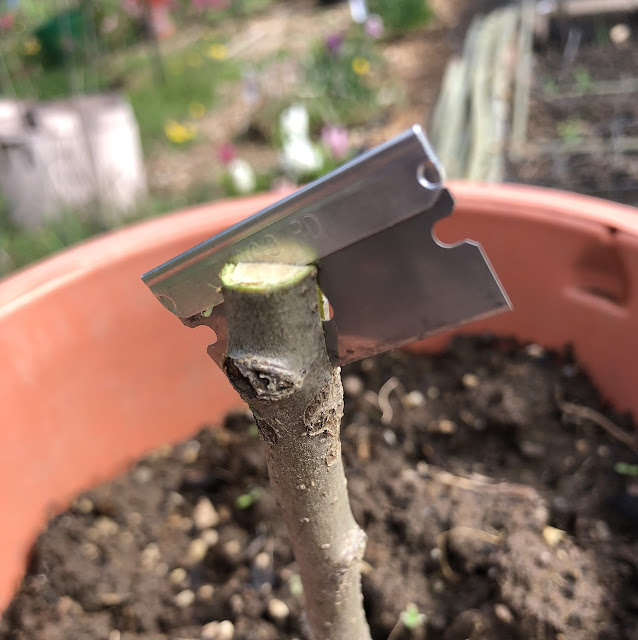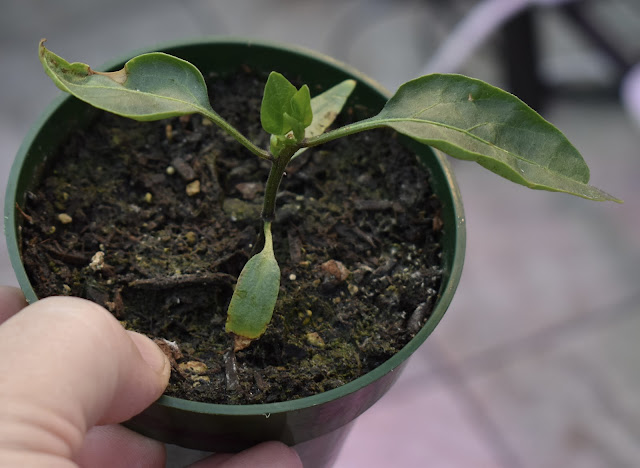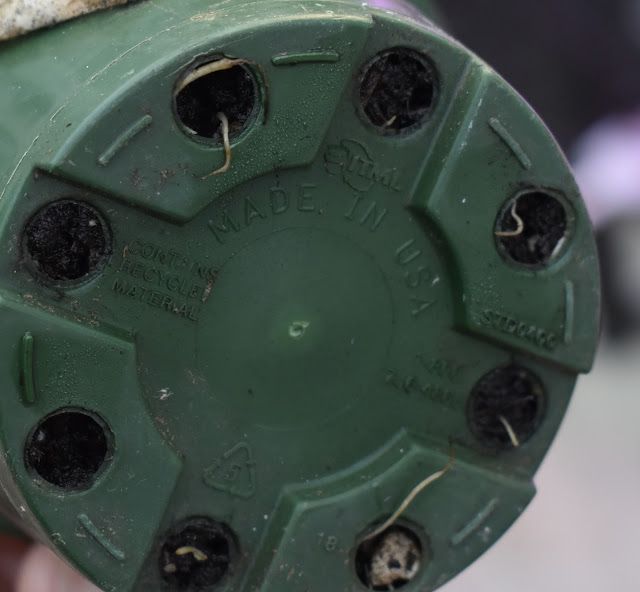Monday, March 28, 2022
Grafting Some Heritage Apple Varieties. 3.28.22
Friday, March 25, 2022
Finished Planter Box. 3.25.22
I found some deck stain in the garage. I've been waiting for a nice day to stain the planter box that I built from weathered cedar. The stain will help it last a few more years than if I left it unstained.
Completed project.
Here's what it looked like before I leaned up the wood and stained it.
Here is the source fencing that I took apart and cut to build the box. I used about seven fencing sections like this one.
More Seed Starting. Tomatoes and Others. 2.25.22
These are other seeds I started yesterday. I waited on sauce tomatoes because I don't see much reason to start them as early, while everyone should want the earliest slicing tomatoes :-).
There were some old "Ranger" sauce tomato seeds. It's an excellent variety that I grew 3 or 4 years ago, productive, tasty, big, disease free. However the seed and shipping were too expensive so I changed to Roma III which are also excellent but bot quite as big. I'm growing out the last of the Ranger seeds so they are not wasted. I also discovered I have a pack of "Supremo" so I will test that with one plant. The bulk of the sauce tomatoes will be Roma III, very productive, good, meaty, good size, disease free sauce tomatoes. I'll grow a few Roma VF that I saved seeds for last year, to see how they do in identical conditions as the others. Last year's Roma VF were off the irrigation grid and shaded by taller tomatoes, so didn't get a good test.
There are also various other plant varieties in this round of seed starting. I'm curious about how the Salpiglossis turn out. Those seeds are like dust. There are conflicting reports on whether they require light.
The condiment bottle is a great way to water seeds. I think it works better than a sprayer.
Planting Stratified Wild Rose and Pyrocanthus Seeds. 3.25.22
These are rose seeds I collected by the roadside in December. I cleaned the rose hips, washed the seeds, placed in wet newspaper and placed that into a zipper plastic bag, then refrigerated until now. Today, I planted them 1/4 inch deep in seed starting medium, and put them on a warming mat.
The seeds have white tips. I wondered if that is the start of a root emerging, but I think the seed coats just have a white tip.
I did the same with Pyrocanthus seeds that I collected this winter and treated the same way, except on wet paper towel.
I planted the Pyrocanthus seeds 1/4 inch deep in seed starting medium, and placed them on the seed warming mat, too.
I read that newspaper is better for stratifying seeds because it's less likely to become moldy, compared to paper towel. Here they seem about the same.
The Mystery of Bad Potting Soil. 3.25.22
These are the peppers that I up-potted in that Miracle-Gro potting soil. They are the third or fourth group of seedling that I planted in that soil.
Everything that I subsequently planted different brand (I forget the brand) of potting soil is looking quite good. It's definitely the pitting soil. I won't claim that the brand is bad, but this batch is definitely toxic for some reason.
I might try re-potting the survivors in a different soil and see if they recover.
Meanwhile, the Jalapeños and Serranos that I had mistreated with Neem oil previously, seem to be sending out new growth.















